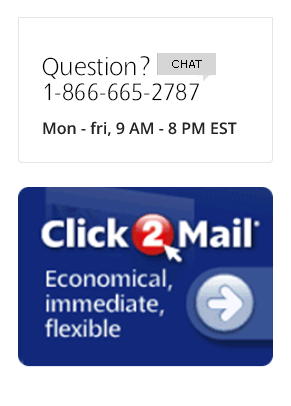In this blog, we’ll explore three ways to measurably increase your success rate for your next direct mail campaign. Managing the mailing list process includes deciding who to mail, who not to mail and how the postal service needs you to present the mailing address.
A good list is made of people you know; with all of their most up-to-date contact details. Let’s say your best friend got a new job in another town, she’ll be getting a new place and a new mailing address. As soon as she knows her new address, she lets you know and you update your records. Perfect, right? Simply put, a good list is one that you are constantly updating.
What about renting lists for prospecting?
There are literally thousands to choose from… “Consumer” lists that identify individuals or households by demographic data and past purchases; “Business” lists also selectable by industry, title, size, location, etc.
Two Industry experts collaborated to evaluate and share their findings on the quality of lists available to businesses to do prospecting. This measurement of data quality in the marketplace can provide a context for your own experience. Here’s a chart from their most recent report:
 Returns are Inevitable
Returns are Inevitable
Looking at this chart, one takeaway is that no matter what list you use to create a mailing, the postal service will not be able to deliver 100% of the mail. Unless you use the electronic address change service, you should expect to get physical mail pieces back from the USPS. (Return to Sender.)
The Role of Suppression Files in List Management
Proper use of suppression files is a critical component of ethical data-driven marketing as it prevents people who don’t want to get your messages (by postal mail and/or email) from receiving them. In other words, just because you have someone’s contact details doesn’t mean you should contact them. Respecting consumer preferences is a practical way to increase your return on investment. Worldwide Innovators says, if your data causes you to send irrelevant, unwanted information to recipients’ chances are they will let you, and their network, know – this situation can be exacerbated if your campaign is set up for repeat sends.
- Create a suppression file specific to your company, of your customers who have communicated their preference on how they want to get marketing information.
- Consider using the Data and Marketing Association (DMA) industry-wide suppression file. Individuals sign up to the Do-Not-Mail suppression file for 10 years.
How the mailing data is presented on the mail piece is an important factor in deliverability. The postal service advises you mail to a street address or a PO Box™, not both. The USPS blog, ‘Don’t let your message get lost in the mail: How to Avoid Mistakes in Addressing’; offers a list of Do’s and Don’ts that focuses on the physical display of addresses.
At Click2Mail, we MailNerds are here to help. Guidance with mailing lists is one way we can help you grow your business.
—————————–
1) Traditionally, the list rental marketplace was based on the principle of ‘one-time’ list rental. Now lists can also be rented for ‘multiple-time’ use and some lists are available for outright purchase. Talk to customer service about what might be best for your business needs.





